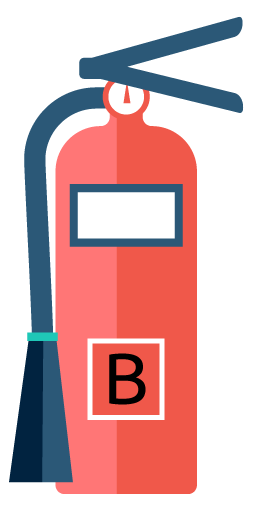Getting to know your Fire Extinguishers
Have burning questions about fire extinguishers? Put them out by getting to know all about that little red cylinder that could just be a lifesaver.
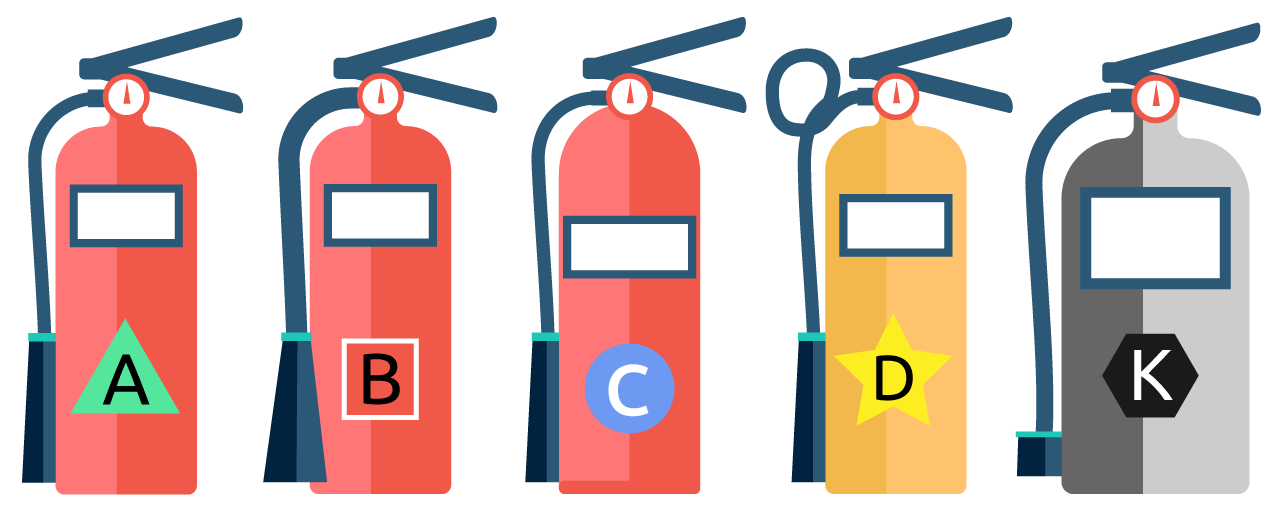
Fire. It seems to appear out of nowhere, but the damage can be lasting. The worst time to think about fire safety is when you’re facing one. Do you know how to operate a fire extinguisher? At home or at work, do you know where your extinguisher is — right now? And if you don’t have one, do you know what type you need?
Small fires can still be a big deal. The difference between whether or not a small fire becomes big can be one person equipped with a small, handheld fire extinguisher, known as an ABC extinguisher. Simple, easy to use, but most likely single use.
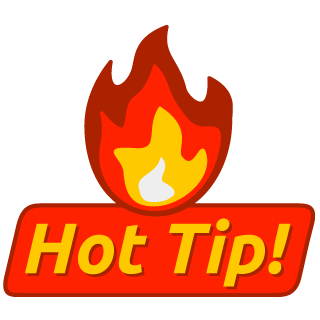
Hot Tip: While red is standard, did you know that fire extinguishers come in different types and colors, including white silver, black, yellow, and more? If you are somewhere unfamiliar and find yourself facing a fire, look for the common cylindrical or oval shape and familiar nozzle to help identify and locate an extinguisher.
Home Safe Home
Home. Most of us are at home a lot more than we were before, which means more cooking, devices being plugged in, and unfortunately chances for fires to break out. Let’s learn some basic safety measures, such as where to place fire extinguishers around your home.
Food for thought: Cooking is the leading cause of home fires! While you’re cooking, a simple splash of too much oil or a dish towel placed too close to the stove can cause a kitchen fire to quickly break out. If that were to happen to you, would you know what to do?
Best practices for kitchen safety include making sure someone is always in the kitchen when cooking and double checking that you‘ve turned off and closed the door to all ovens, including microwaves.
To get ready for a kitchen fire, here’s what to do:

Hot Tip: Don’t walk away! If having too many cooks in the kitchen is a problem, no cooks is much worse. Leaving unattended food cooking, especially on the stovetop, is the NUMBER ONE CAUSE of kitchen fires. That small distraction could become a big, dangerous, and costly problem. If the stove is cooking, just keep looking!
How Many Fire Extinguishers Do You Need?
For starters on fire stoppers: Generally speaking, the overall takeaway is that you should have at least 1 fire extinguisher. Period. Full stop. If you do not have one fire extinguisher, that is your first step. And if you have just 1 fire extinguisher, place it in the kitchen where it can be easily reached.
While your home layout is unique, here are some common fire extinguisher placements to ensue full coverage:
And your magic number is:
Investing in fire extinguishers and placing them correctly throughout your home can be the difference between a close call and a family tragedy. Take a moment to write down or take a screenshot the number of fire extinguishers you need. Then be sure to follow up! Fire extinguishers only work if you buy them, place them, and use them properly.

Hot Tip: When burning rubber isn’t a metaphor, it’s good to have a fire extinguisher handy! Consider adding a special small car extinguisher to your safety plan. Pair it with smoke and carbon monoxide detectors, and you’ll be all set for that road trip!
🔥 Fire Away 🔥
When to engage a fire
No doubt about it: unexpected fires are scary! While every situation is different, it’s important to remain calm. First things first, getting injured trying to help doesn’t help anyone, so if you don’t feel comfortable engaging a fire then call 9-1-1 or find someone who can.
Here are some questions to ask yourself now, before a fire starts:
If you squeeze the handle on any extinguisher:
Respect Inspections
A simple truth: annual inspections can save lives. A basic walkthrough can highlight gaps in your home safety plan, and remember to involve the whole family with age-appropriate communication for how each family member should respond in the event of an actual fire.
Have you ever conducted a home fire inspection before? Let’s go on a quick Home Walkthrough! Where are your fire extinguishers? A key thing to pay attention to when conducting an inspection is distance. What is the furthest distance from where you spend most of your time in each room, such as your dining room table or office desk, to get to the nearest extinguisher? If it’s too far, consider adding another extinguisher that’s more accessible. Keep in mind not just the distance but the time it would take you to access the extinguisher and engage a fire as well as any likely obstacles that could affect the time frame. This is especially important for anyone with a mobility issue or who is differently abled. Planning ahead can save lives!
Learn more from AidTeam: Home Fire Prevention (Preparation: Level 1)
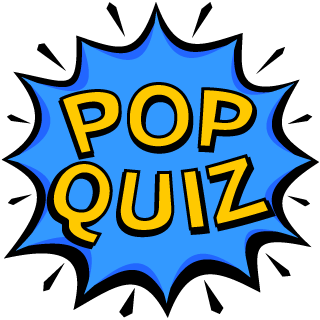
True or False:
Fire extinguishers last forever, so buy just one and done.
False! The average fire extinguisher only lasts between 3 and 6 years, so make checking the expiration date on your extinguishers (plural!) part of your annual safety inspections.
That’s right! The average fire extinguisher only lasts between 3 and 6 years, so make checking the expiration date on your extinguishers (plural!) part of your annual safety inspections.
The Dos
and DO NOTs
After a fire
Minor injuries include:
When the fire is out and the smoke clears, reality can feel — unreal. Your mind may feel hazy and overwhelmed with what to do next. The first thing to do after a fire is assess any injuries — especially yourself!
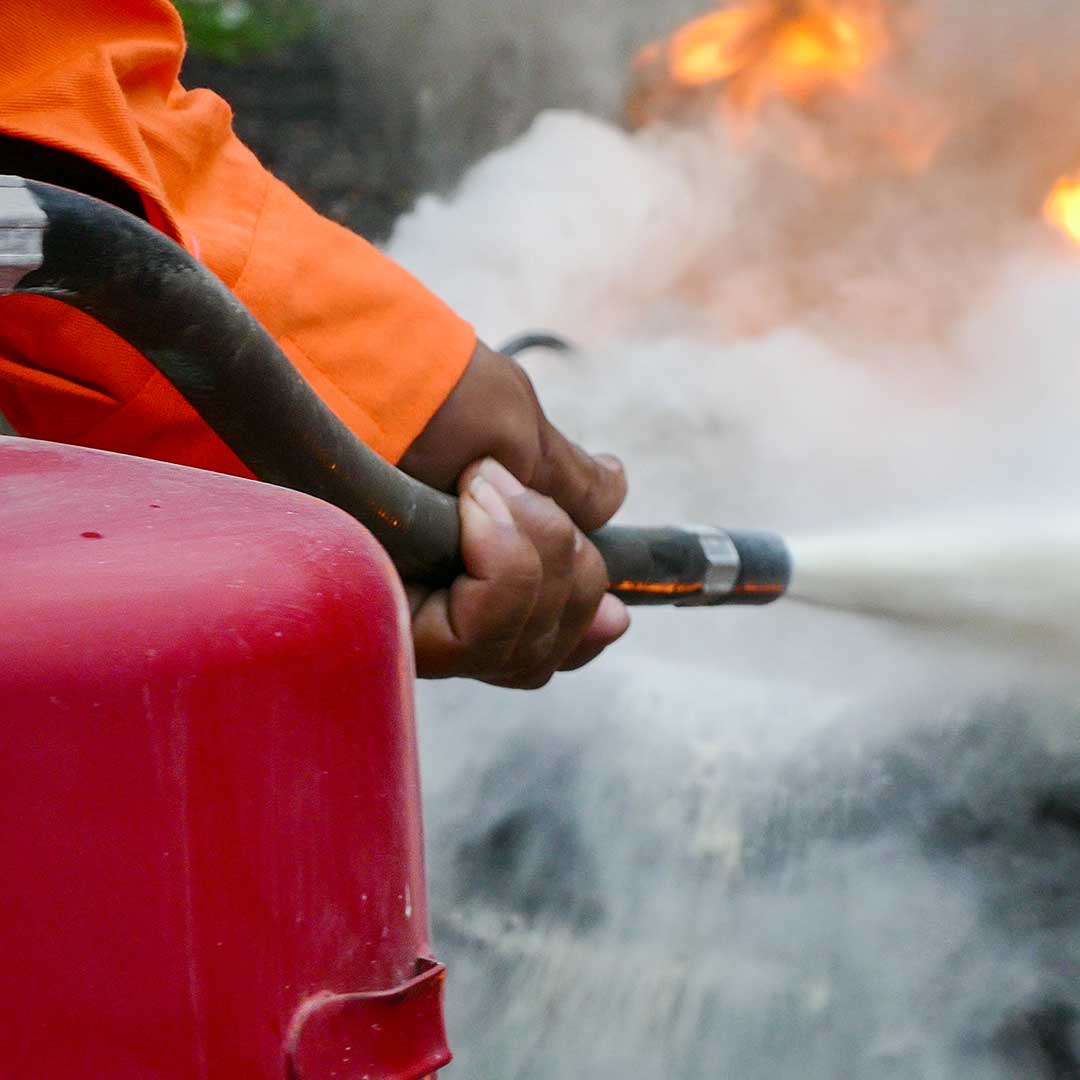
Smoke inhalation. Symptoms: Coughing, shortness of breath, raspy breathing but returns to normal. A headache, pale skin, eye irritation and chest pain are all signs of more severe smoke inhalation. Seek medical assistance, especially for any eye injuries.
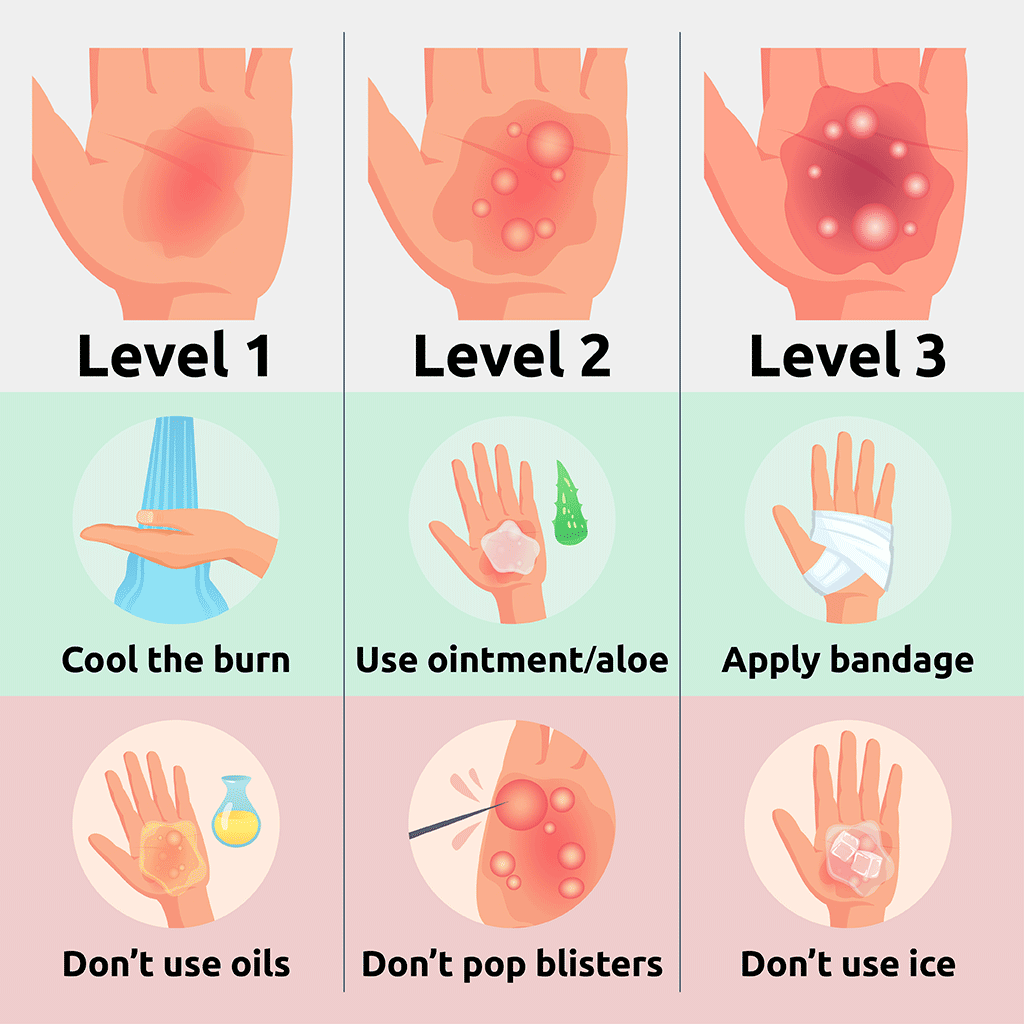
Light burns. Treatment: Immerse under cool — not cold or hot — water until pain reduces, sterilize and cover. Don’t use oils or lotions of any kind on any burn. Check regularly, clean if necessary and replace bandages. For anything more severe seek medical assistance.
Anything more immediately go to a Hospital,
Urgent Care or see a Doctor!
Especially if you are treating burns:

Hot Tip: Get your docs in a row! Document what has happened while it’s still fresh. If you own your home or a rental building, contact your insurance company. If you’re a renter, contact your property manager and building owner. Properly dispose of any used fire extinguishers as they contain hazardous chemicals. Look up the proper disposal rules for your state.
Special Thanks to the experts: National Fire Protection Association (NFPA), Ready.gov, and all those who keep us safe.








